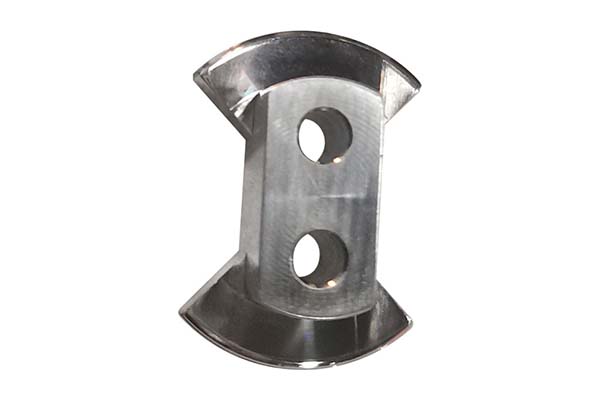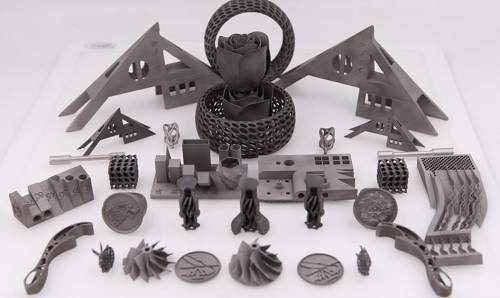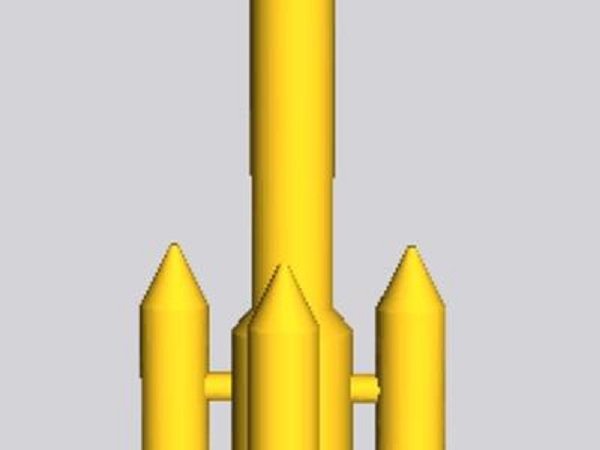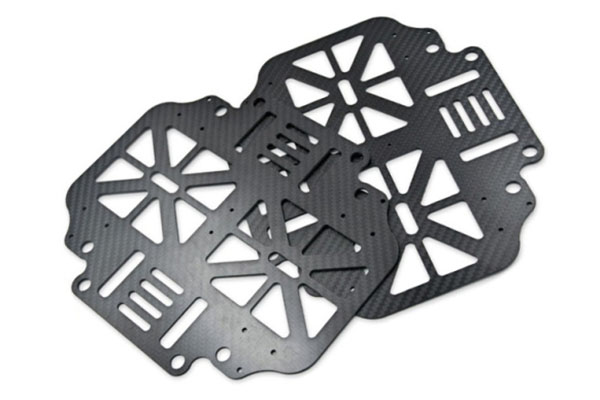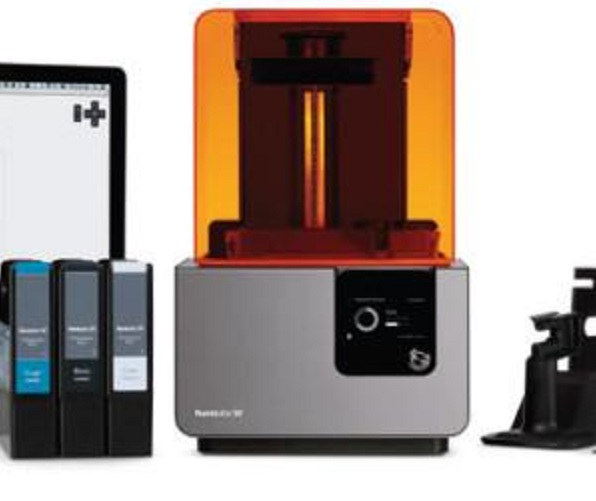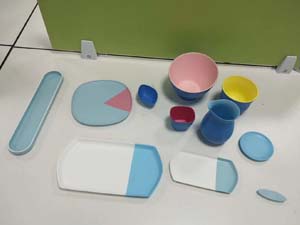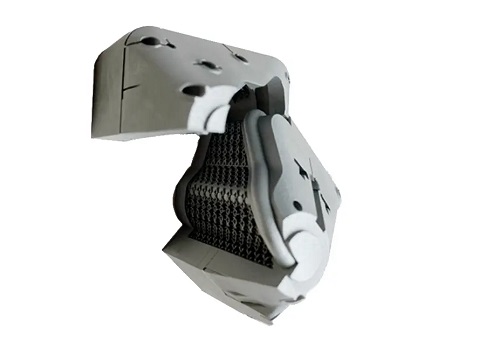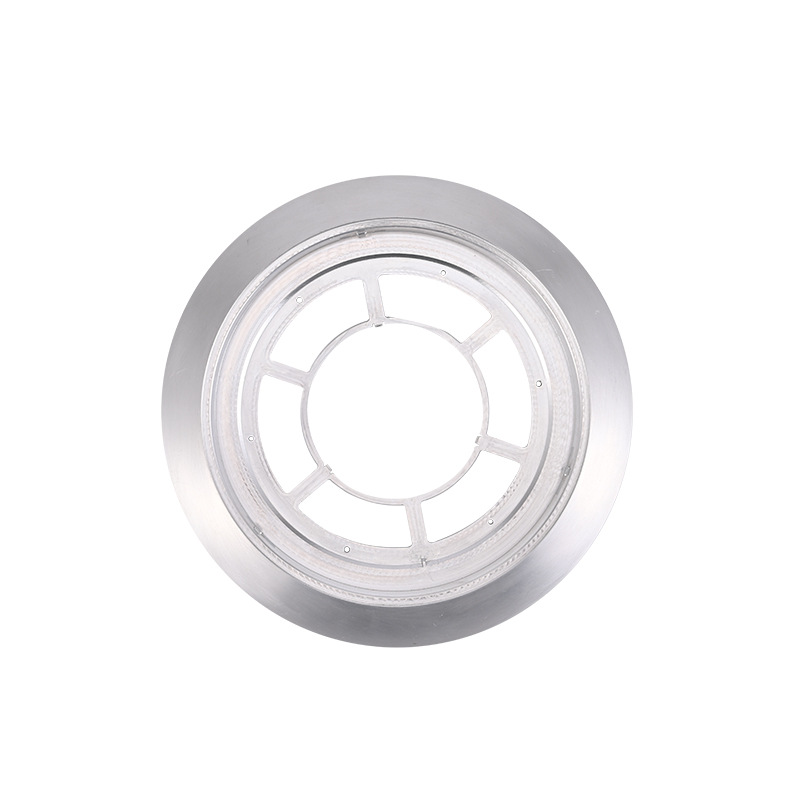What is SLS Nylon 3D Printing?
SLS nylon 3D printing, short for Selective Laser Sintering nylon 3D printing, is an advanced additive manufacturing technology. It falls into the category of powder bed fusion 3D printing methods.
The Working Principle
The basic principle of SLS nylon 3D printing is as follows: First, a thin layer of nylon powder is evenly spread across a build platform. Then, a high - energy laser beam, directed by a computer - controlled scanning system, selectively heats and sinters the nylon powder according to the cross - sectional data of the 3D model. As the laser scans, the powder particles in the selected areas melt and fuse together, forming a solid layer. After one layer is completed, the build platform lowers by a certain thickness (usually in the range of 0.05 - 0.3 mm, depending on the printer and requirements), and a new layer of powder is spread. The laser then sinters the next layer on top of the previously solidified one. This process repeats layer by layer until the entire three - dimensional object is created. For example, in a complex mechanical part with internal cavities and intricate geometries, the laser can precisely sinter the nylon powder to form the exact shape, layer upon layer, without the need for additional support structures in most cases.
Nylon Material Features
Nylon, also known as polyamide, is an ideal material for SLS 3D printing due to its excellent properties:
- Mechanical Strength: Nylon has high tensile and impact strength. For instance, the tensile strength of common SLS - printable nylon powders can range from 40 - 60 MPa. This makes the printed parts suitable for applications that require resistance to mechanical stress, such as automotive components like brackets and fixtures.
- Wear Resistance: It exhibits remarkable wear - resistance, which is crucial for parts that are subject to friction during operation. In industrial machinery, nylon 3D - printed gears can last longer compared to those made from some other materials, reducing the frequency of replacement.
- Chemical Resistance: Nylon can withstand exposure to a variety of chemicals, including many acids, alkalis, and organic solvents. This property makes it suitable for use in chemical processing plants, where parts need to resist chemical corrosion.
- Thermal Stability: It has good thermal stability, allowing it to maintain its mechanical properties within a certain temperature range. Some nylon materials can endure temperatures up to 150°C, making them applicable in environments with moderate heat.
How Does SLS Nylon 3D Printing Work?
The process of SLS nylon 3D printing can be broken down into several key steps:
- Data Preparation
- First, you need to have a 3D model of the object you want to print. This model is usually created using 3D modeling software such as Autodesk Maya, Blender, or SolidWorks. The 3D model is then saved in a format compatible with 3D printers, most commonly the STL (Standard Tessellation Language) format. For example, if you are designing a custom - made mechanical gear, you would use CAD software to create an accurate 3D model of the gear, specifying all its dimensions, teeth profile, and any additional features.
- After obtaining the STL file, it is imported into slicing software. The slicing software divides the 3D model into thin, horizontal layers. It also generates the G - code, which is a set of instructions that the 3D printer can understand. These instructions tell the printer how to move the laser, at what speed, and which areas of the powder bed to sinter for each layer.
- Powder Spreading
- Once the data is ready, the actual printing process begins. A layer of nylon powder is evenly spread across the build platform. This is typically done using a recoater, which can be a roller or a blade. The thickness of the powder layer is crucial and usually ranges from 0.05 - 0.3 mm. A thinner layer can result in higher - resolution prints but may increase the printing time, while a thicker layer can speed up the process but might sacrifice some detail. For instance, in a high - precision SLS printer, a layer thickness of 0.08 mm might be used for parts that require fine details, like small intricate jewelry components.
- Laser Sintering
- After the powder is spread, a high - energy laser beam comes into action. The laser is directed by a galvanometric scanning system, which is controlled by the G - code generated earlier. The laser selectively heats and sinters the nylon powder according to the cross - sectional shape of the 3D model for that particular layer. As the laser scans over the powder bed, the powder particles absorb the laser energy, heat up, and fuse together. For example, in the production of a 3D - printed automotive air duct, the laser will sinter the nylon powder layer by layer to form the complex shape of the duct, ensuring proper air flow channels are created.
- Layer Stacking
- After one layer is sintered, the build platform lowers by the thickness of one layer. A new layer of powder is then spread on top of the previously sintered layer, and the laser sintering process is repeated for this new layer. This process continues, layer by layer, until the entire 3D object is built up. The layers bond to each other during the sintering process, creating a solid, three - dimensional structure. For a large - scale industrial part, like a complex engine bracket, hundreds or even thousands of layers may be required to complete the print.
Applications of SLS Nylon 3D Printing
SLS nylon 3D printing has found its way into a wide range of industries, revolutionizing the manufacturing process with its unique capabilities.
Automotive Industry
- Manufacturing Components: In the automotive industry, SLS nylon 3D printing is used to produce various components. For example, engine brackets can be 3D - printed using nylon. These brackets need to withstand high mechanical stress, and the high - strength property of nylon makes it a suitable material. According to industry data, 3D - printed nylon engine brackets can reduce the weight of the component by about 30% compared to traditional metal - made brackets, while still maintaining sufficient strength to support the engine.
- Lightweight Design: Lightweighting is a key trend in the automotive industry to improve fuel efficiency and performance. SLS nylon 3D printing enables the creation of complex, lattice - like structures within components. These structures reduce the weight of the parts without sacrificing their structural integrity. For instance, some car manufacturers are using 3D - printed nylon air ducts. The internal channels of these air ducts can be optimized through 3D printing to improve air flow, and the overall weight of the air duct is reduced by up to 40% compared to traditional injection - molded plastic air ducts.
- Customized Parts: SLS nylon 3D printing allows for the production of customized automotive parts. Enthusiasts can create unique interior components such as custom - designed gear knobs, dashboards, or door handles. A study showed that in the aftermarket automotive parts sector, 3D - printed nylon customized parts can be produced at a cost that is 20 - 30% lower than traditional manufacturing methods for small - batch production.
Aerospace Industry
- Complex Structure Manufacturing: The aerospace industry demands components with complex geometries. SLS nylon 3D printing can create parts with intricate internal channels and lattice structures. For example, fuel nozzles in aircraft engines often have complex internal flow - path designs. 3D - printed nylon fuel nozzles can achieve these complex designs precisely, improving fuel atomization and combustion efficiency.
- Weight Reduction: Reducing the weight of aircraft components is crucial for improving fuel efficiency and increasing payload capacity. Nylon is a lightweight material, and 3D - printed nylon parts in aerospace applications can significantly contribute to weight reduction. A case study of a 3D - printed nylon aircraft interior panel showed a weight reduction of 50% compared to its traditional metal counterpart, while still meeting the required strength and fire - resistance standards.
- Performance Enhancement: The high - temperature resistance and chemical resistance of nylon make 3D - printed nylon parts suitable for use in harsh aerospace environments. Some satellite components, such as antenna brackets, are being 3D - printed using nylon. These brackets can withstand the extreme temperatures and radiation in space, ensuring the long - term performance of the satellite.
Medical Field
- Medical Device Manufacturing: SLS nylon 3D printing is used to produce a variety of medical devices. For example, surgical instruments can be 3D - printed with customized grips and shapes to fit the hands of surgeons more comfortably. These customized surgical instruments can improve the precision and efficiency of surgical procedures. A survey of surgeons who have used 3D - printed nylon surgical instruments reported a 15 - 20% improvement in their surgical operation speed and accuracy.
- Prosthetics: Custom - made prosthetics can be created using SLS nylon 3D printing. Each patient's limb has unique dimensions and shapes, and 3D - printed nylon prosthetics can be tailored to fit perfectly. These prosthetics are not only more comfortable for the patients but also lighter in weight compared to traditional prosthetics. For instance, a 3D - printed nylon below - knee prosthetic socket can reduce the weight by about 30%, making it easier for the wearer to move around.
- Implantable Devices: In some cases, nylon - based 3D - printed implantable devices are being explored. These devices need to be biocompatible and have the right mechanical properties. Some research projects are focused on developing 3D - printed nylon scaffolds for tissue engineering, which can provide a framework for cells to grow and form new tissues.
Comparison with Other 3D Printing Technologies
When considering 3D printing technologies, it's essential to understand how SLS nylon 3D printing stacks up against others. Here is a comparison table highlighting the differences between SLS nylon 3D printing and some other common 3D printing technologies:
| 3D Printing Technology | Material | Resolution | Part Strength | Support Structure | Surface Finish | Cost |
| SLS Nylon 3D Printing | Nylon powder | ±100 - ±300 microns | High, suitable for functional parts | Not required, unfused powder acts as support | Relatively rough, post - processing may be needed | High equipment cost, but lower per - part cost for small - batch production |
| FDM (Fused Deposition Modeling) | Filament (e.g., PLA, ABS) | ±200 - ±500 microns | Moderate, depending on material | Required for overhangs and complex geometries | Layer lines visible, rough surface | Low equipment cost, low - cost materials |
| SLA (Stereolithography) | Liquid photopolymer resin | ±20 - ±100 microns | Moderate, resins may have voids | Required, can be difficult to remove | Smooth, high - precision surface | Medium - high equipment cost, resin cost can be high |
| SLM (Selective Laser Melting) | Metal powder | ±20 - ±100 microns | High, fully dense metal parts | Sometimes required, depending on geometry | Smooth, but may need post - processing | Very high equipment cost, high - cost metal powders |
Explanation of the Differences
- Material: SLS nylon 3D printing uses nylon powder, which offers unique mechanical properties. FDM uses filaments, SLA uses liquid resins, and SLM uses metal powders. Each material type has its own advantages and limitations in terms of strength, flexibility, and chemical resistance.
- Resolution: SLA and SLM generally offer higher resolution, suitable for detailed and precise parts. SLS has a relatively lower resolution but is still sufficient for many functional applications. FDM has the lowest resolution among these, which may be a limiting factor for parts with fine details.
- Part Strength: SLM - printed metal parts and SLS - printed nylon parts can have high strength, making them suitable for functional applications. SLA - printed parts have moderate strength due to the nature of the resin material, and FDM - printed parts' strength depends on the filament material used.
- Support Structure: SLS is unique in that it doesn't require additional support structures as the unfused powder supports the part during printing. Other technologies often need support structures, which can be time - consuming to remove and may leave marks on the part.
- Surface Finish: SLA provides a smooth surface finish, ideal for parts where aesthetics are important. SLS parts have a relatively rough surface and may require post - processing such as sanding or coating to achieve a smoother finish. FDM parts have visible layer lines, and SLM parts may also need post - processing for a better surface finish.
- Cost: SLS and SLM have high equipment costs, but SLS can be cost - effective for small - batch production of functional parts. FDM has the lowest equipment cost, making it accessible for hobbyists and small - scale prototyping. SLA has medium - high equipment and resin costs.
Yigu Technology's View
As a non - standard plastic metal products custom supplier, Yigu Technology highly values SLS nylon 3D printing. We recognize its potential to revolutionize the manufacturing process, especially for complex and customized parts.
Our advantage lies in our in - depth understanding of material properties. We have extensive experience in working with various nylon - based materials, allowing us to optimize the printing process for different applications. For example, we can adjust the printing parameters according to the specific mechanical requirements of the parts, ensuring high - quality output.
Moreover, Yigu Technology has a professional team of engineers who are proficient in 3D design and printing technology. They can provide one - stop solutions for customers, from product design optimization to the final production of 3D - printed parts. This comprehensive service can help customers save time and cost, and achieve their production goals more efficiently.

